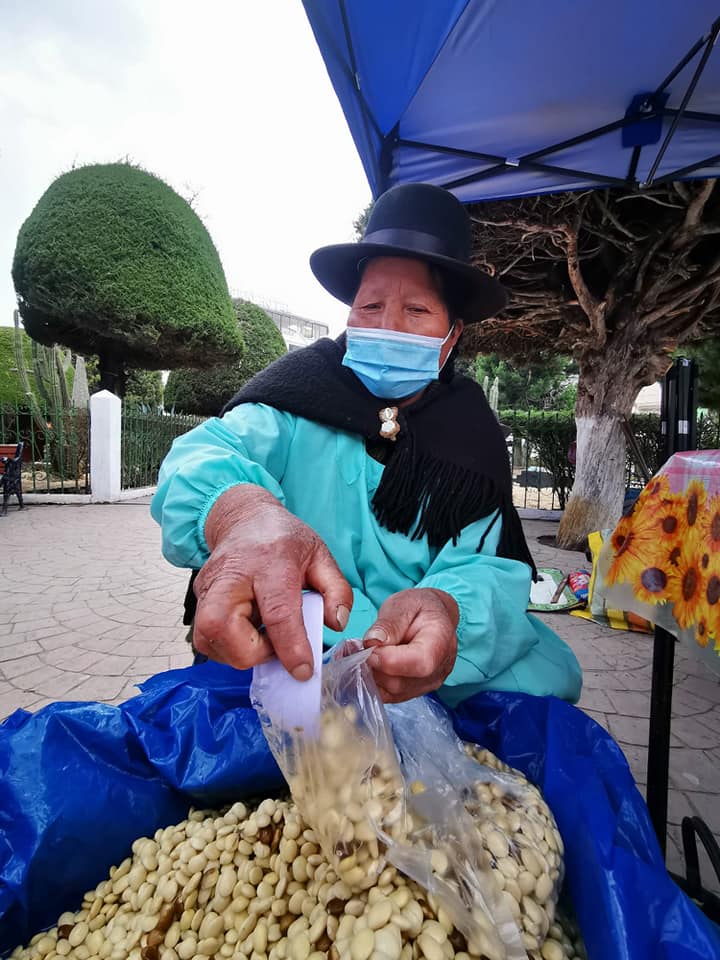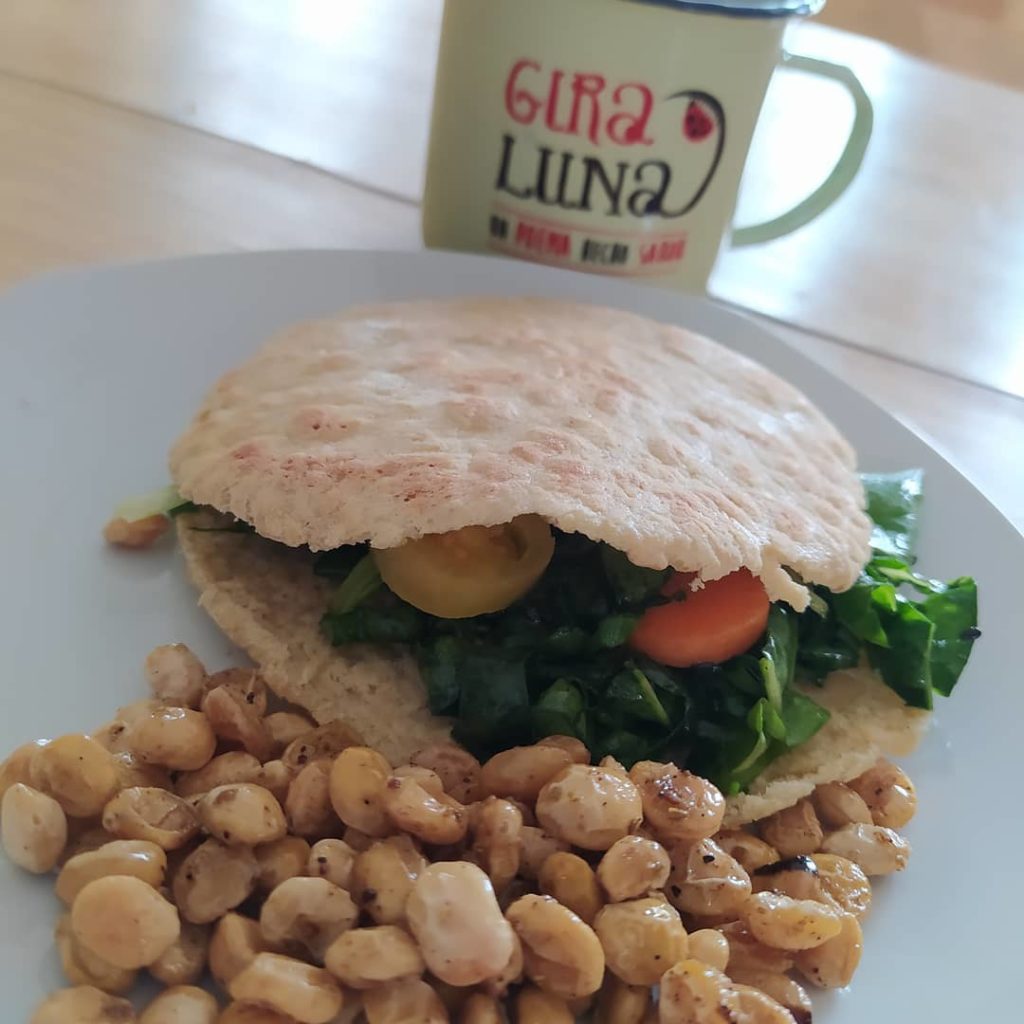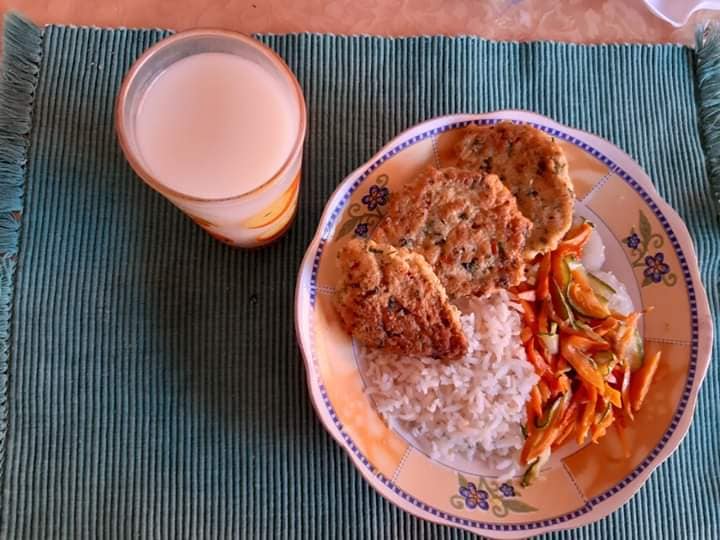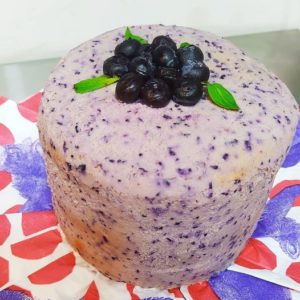Tarwi is a white Andean legume that has been cultivated even before the Inca Empire, during the times of the Nazca and Tiwanaku civilizations. Nowadays it grows in the Andean region of Bolivia, Perú, Ecuador, Chile, Argentina, Venezuela, and Colombia. It is a beautiful violet plant with leaves shaded white and yellow, and it adapts very well to high lands and valleys. Tarwi, also known as Andean lupin, is considered a superfood because of its nutritional properties, versatility, and ecological option that also helps to mitigate climate change.

This legume is very attractive to vegans because it is full of protein (40% to 50% recommended daily value of protein for every 100 g), even more than soy and quinoa. The level of protein is higher when it is consumed as a type of flour. In addition, it is packed with calcium (15% recommended daily value of of calcium for every 100 g) and lysine, which is an essential amino acid that helps to absorb calcium. This property is why it is promoted among pregnant women, breastfeeding mothers, and growing children. Its wonders don’t stop there, because tarwi is also rich in fiber, iron, omega-3, magnesium, phosphorus, and more essential amino acids. This means that is also beneficial for weight loss, diabetes, increasing physical resistance, stress regulation, increase of well-being feeling, enhance of the immune system, development of the nervous system, building muscular tissue, and heart health.

Until the grain is ready to be eaten, there is a process that is mostly taken care of by women of the communities. The grain itself is very bitter because it has a lot of alkaloids. Therefore, it is first soaked in big buckets of water for about 12 hours. Then it is boiled for 6 hours in wood stoves. Afterward, it is soaked again for two to five days. In some communities, they take advantage of nearby lakes and rivers to soak the grains, and in other cases, it is calculated to use 60 to 80 liters of water per kilo of tarwi (which is not a lot compared to other crops).
When that process is over, tarwi is ready to be eaten. There is actually no need to cook it because it is very soft and tender (it is similar to cooked corn). There used to be a tradition of buying a small bag of tarwi from the street sellers and eating it while running the daily errands. On the other hand, there are many vegan salty and sweet recipes that one can make with tarwi, because it has a very neutral flavor. To name some, there is milk, beverages, desserts, flour, soups, sauces, and everything that can branch out from that (like ceviche, bread, pizza, noodles, cookies, truffles, nachos, cheese, vegetable meat, and so much more). Finally, tarwi is rich in omega-3, so it could be turned into oil, but sadly the process is too expensive nowadays.


As if this weren’t enough, local people know more uses that we can give to other parts of tarwi. For instance, the water used to remove the alkaloids can be reused as an insecticide in other crops, and as a pesticide of ticks and fleas to be used in the fur of any type of animal, including dogs.
Tarwi is also known as an ecological alternative for adaptation and mitigation to climate change. First, it can grow in different altitudes, so it can adapt easily to lower temperatures. Moreover, it absorbs nitrogen from the atmosphere and sets it to the ground (up to 100 Kg. for every Ha.), so it takes a greenhouse gas and transforms it into a fertilizer. This is also helpful to heal soils that have been affected by intensive agriculture. Tarwi does this because its roots are 2 m long, which is ideal for absorbing humidity and transforming the nitrogen. Also, the plant part of tarwi is often buried in the ground after the grains are taken, because it serves as a fertilizer. Furthermore, tarwi is a strategic crop in the context of the climate crisis, because it reduces the risks of soil degradation, and maximizes the production of the next crops.


Sadly, tarwi is not valued enough, which is making the prices drop, and the farmers are in turn discouraged to keep growing it. Nowadays, a Bolivian person only eats 100 g of tarwi per year, while an Ecuadorian consumes 4 Kg per year. It is important that everyone knows about these kinds of legumes, which are nutritious and ecological. Tarwi means a generational work, that keeps costumes alive, by the hand of women farmers. Besides, this legume has the potential to be a protein and calcium source for vegans that also help the ecosystems to recover.
Also by Matilde: Wildfires In Bolivia Are Killing Millions Of Animals. Why Veganism Is Key To Conservation
Get more like this—Sign up for our daily inspirational newsletter for exclusive content!
__
Photo: Matilde Rada




